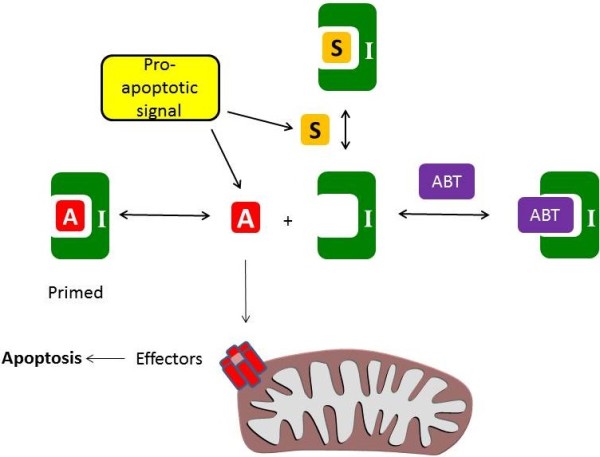Figure 1.

The intrinsic apoptosis pathway. Apoptosis is triggered by the formation of a pore in the mitochondrial outer membrane formed from the effectors. This is controlled by the activator molecules (BID, BIM, PUMA, labelled “A”) which directly stimulate the effectors (BAK and BAX). A pro-apoptotic signal (such as oncogene stress or chemotherapy) induces the expression of apoptosis activators and sensitizers. The activators may be sequestered by the inhibitors (labelled “I”, e.g. BCL-2, BCL-XL, MCL-1) and this prevents apoptosis. However, sensitizer molecules (labelled “S”, eg NOXA, BAD) or BH3 mimetics (eg ABT-737, labelled “ABT”) can occupy the inhibitors, preventing them from binding the activators. In cells in which the inhibitors are already primed with an activator, the effective displacement of the activator from the inhibitor by ABT-737 induces apoptosis.
